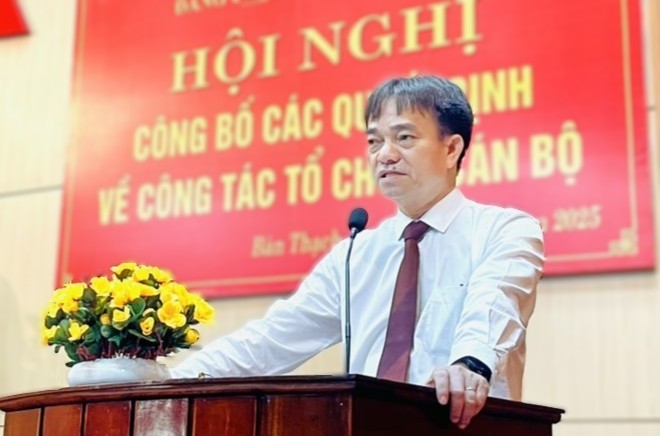On the morning of July 21, the Ban Thach Ward Party Committee (Da Nang City) held its first Congress of Delegates for the 2025-2030 term.
At the congress, the Standing Committee of the Da Nang City Party Committee announced the decision to appoint personnel for the Ward Party Executive Committee consisting of 28 people, of which the Standing Committee has 10 people. Mr. Nguyen Duy An was appointed to hold the position of Secretary of the Ban Thach Ward Party Committee; the two Deputy Secretaries are Mr. Le Ngoc Duong and Mr. Duong Van Tuan.

Mr. Nguyen Duy An was once Deputy Secretary of the City Party Committee, Chairman of the People's Committee of the old Tam Ky City (old Quang Nam Province) - where administrative units had just merged into Da Nang City. His assignment to head the Party Committee of a newly established ward such as Ban Thach is considered a reasonable continuation in the process of perfecting the apparatus after the administrative arrangement.
Ban Thach Ward was established on the basis of merging 3 localities: Tan Thanh Ward, Hoa Thuan Ward and Tam Thang Commune (old Tam Ky City). The name of the ward is taken from the Ban Thach River - the river flowing through this area, bearing a strong cultural and historical imprint.
Speaking at the congress, Mr. Nguyen Duy An emphasized: The reorganization of local government according to the 2-level model is a major policy, with historical significance, demonstrating the strategic vision of the Party and State to streamline the apparatus, improve management efficiency, and at the same time maximize the strengths of localities after the merger.
The establishment of Ban Thach ward is not simply about adjusting administrative boundaries, but also a convergence of the quintessence, tradition and development potential of the three old localities in a unified block - creating new momentum for sustainable development.
In the 2025-2030 term, the Ban Thach Ward Party Committee sets a target of average economic growth of 12%/year, annual budget revenue increases by 10-15%, aiming to build a comprehensive ward with comprehensive economic, social and urban infrastructure development.











